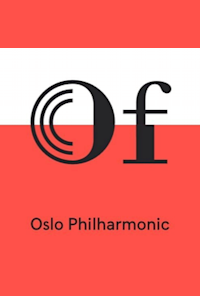Beethoven and Rimsky-Korsakov
Vasily Petrenko and the Oslo Philharmonic start their season with a spellbinding tale coupled with regal tones from the piano.
The journey starts in Baghdad, where by telling fairy tales, Scheherazade convinces the sultan to spare her life in One Thousand and One Nights, here set to captivating melodies and colourful sounds by Nikolai Rimsky-Korsakov. Moreover, Stephen Hough performs the undisputed king amongst Beethoven's solo concertos − the mighty “Emperor” concerto.
No one mastered the art of orchestration better than the Russian composer Nikolai Rimsky-Korsakov (1844−1908). He wrote a well-known book on the theory of the subject, and composed music with extraordinarily rich, well-balanced and confident use of sound. Aside from mastering his craft, he had additional, and perhaps more important, abilities, such as that of selecting sound colours, harmonies and melodies in order to describe a narrative, or to capture a character or a mood. His greatest success was the music to the story of Scheherazade from the collection of stories One Thousand and One Nights. This symphonic suite was composed and premiered in 1888 with the composer himself conducting, and remains his most acclaimed composition.
Scheherazade consists of four movements: The Sea and Sinbad´s Ship, The Kalendar Prince, The Young Prince and The Young Princess, The Festival at Baghdad. The Sea. The Ship Breaks against a Cliff Surmounted by a Bronze Horseman. The violent trombone theme, often associated with the evil sultan, is introduced already in the opening, and Scheherazade´s beautiful theme is played by a solo violin − an arabesque melody with oriental-inspired ornaments which coils itself around us, casting a spell on both the sultan and the listener. Even though the Orientalism of the 1800s might not feel relevant today, the music creates a vivid fantasy, sending us off on a flying carpet while evoking the timeless, universal world of the fairy tale.
Ludwig van Beethoven's (1770−1827) Piano Concerto No. 5 − “The Emperor Concerto” − must also contain a touch of magic, for it has remained hugely popular for more than two centuries since it received its world premiere in Vienna in 1812. An anecdote from the world premiere relays that a French soldier was so captivated by the grand music that he stood up, exclaiming “C´est L`Empereur!” (“It's the Emperor!”), and that this was the origin of the concerto's epithet. Whether or not the anecdote is true, the work has always been known as “The Emperor Concerto”.
In 1812, no one had ever experienced a piano concerto of such proportions and which was imbued with such overwhelming power. Worth mentioning is that Beethoven started work on the concerto in 1809 − the same year that Napoleon invaded the composer's native city, Vienna. This might explain the heroic and almost military expression in the first and last movements. The second movement, on the other hand, is velvety smooth and beautiful in all its elegant simplicity. Like Scheherazade, this concerto has the power to spellbind.
